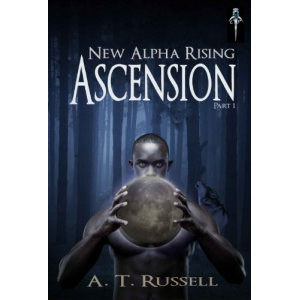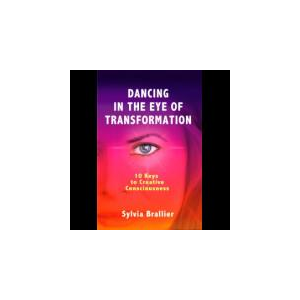Beyond the Summit
I used to lead treks to the Everest Base Camp and was a founder of thefirst hut system in Nepal. Present during the worst storm in Nepal'shistory, I was appalled at world press coverage of the foreigners whodied with little mention of the Sherpas who also perished. I returnedhome to write their story and chose to do so in fiction to gain a wider audience.However, every part of the story is based on actual historical facts, interviews with Sherpas, my own experiences while there, and extensive research into the culture and religion.
Beyond the Summit has something for everyone: a love affair between an American journalist and Sherpa guide, conflict between generations and among friends as the modern world challenges centuries of tradition, Sherpa culture, Buddhist rituals, The Chinese overthrow of Tibet, and an Everest expedition from the porter's point of view.
Media Mentions
Praise and Reviews
The Newsletter of the International Mountain Explorers Connection
Beyond the Summit is a Himalayan adventure-romance set among the towering peaks of the Khumbu region, and it is both an informative and guilty pleasure. The novel follows Beth, an intrepid and comely young American journalist who travels to Nepal in the early days of tourism in the Himalayas’ once-forbidden kingdom. While there, she meets Dorje, a young Sherpa guide who exudes intelligent dignity and dreams of high summits. Dorje longs to join the modern world; Beth longs for the simplicity and authenticity Dorje’s people represent; soon, they also long for each other. The two weather cultural misunderstandings, disapproval, jealousy, separation, self-seeking tourists, and deadly winter storms to find love across the cultures. The book is not only a traditional love story, it is also an ode to the humanity of the Sherpas, so often belittled and overlooked in Himalayan climbing dramas. And it is, furthermore, a darn good read.
Everestnews.comA gripping, gut-twisting expedition through the eyes of a porter reveals the heart and soul of Sherpas living in the shadows of Everest.
Beyond The Summit is a beautifully written novel that will captivate readers from start to finish. Author, Linda LeBlanc, provides a unique opportunity for Mount Everest to be seen from the eyes of a Sherpa. In the first fiction written in the United States about Sherpa culture, LeBlanc reveals the heart and soul of these forgotten heroes living in the shadows of Everest. From the notorious Lukla runway to the roof of the world, this story authentically depicts the Everest journey from a Sherpa’s perspective. Set in 1968, thirteen years after Sir Edmund Hillary and Tenzig Norgay’s accent of Mount Everest, this multifaceted work paints a realistic picture of the Everest Region, Sherpa culture, and shows how western expeditions forever altered the lives of these simple people.
Beyond The Summit is a story about a young Sherpa, Dorje, who dreams to stand on the summit of Mount Everest as the great Tenzing Norgay before him. This desire that was born into his being as a young child imposes a paramount conflict. As an influx of tourists flood the remote Himalayan region, Dorje longs for what the modern world brings, even if it means abandoning his tradition and his father. In his quest to stand on top of the mountain that has seduced him since childhood, Dorje struggles not only against the violent storms of Everest but clashes with his father as old ways allude him.
Woven into this amazing journey is an incredible love affair
that is birthed when the lives and dreams of Dorje and an American journalist,
Beth, collide Dorje’s affair with Beth, who longs to study and write about the
Sherpa people, unveils a love that few humans will ever experience. This
gripping novel reveals the dreams and determination that are beyond the summit
of Mount Everest. Beyond The Summit beautifully illustrates that the summit of
Mount Everest is not a destination, it is a journey to the most sacred part of
the human soul.
International Porter Protection Group
This book covers the daily lives of people in the Himalayas. It not
even goes beyond the summit but beyond the Shangri_la image often
painted by visitors, people in search of spirituality. The story in
itself is immensely spiritual but not the circumstances under which
life has to take place.
I represent a volunteer organization IPPG (International porter
protection group, check us out at [...]) that gives high altitude
porters a voice and I am depply touched by Linda LeBlanc's account
which is more truth than fiction.
Boulder Daily Camera
Hiking in the mountains is my passion, I yearn to travel to exotic places and I love a good story, so I was eager to read "Beyond The Summit," a novel about the Sherpa people of Nepal. I expected a good read and what I got was an exhilarating experience. Local author Linda LeBlanc — who signs the book Monday night at the Boulder Book Store — is a consummate craftswoman with an excellent eye for descriptive detail and a sensitive ear for a variety of voices. Even secondary characters, however brief their sojourn in these pages, are given distinctive and authentic voices.
We meet the protagonist, Dorje, a young Sherpa trekking guide, in Chapter Two, after being first introduced to the radically different culture of Kathmandu through the eyes of a sophisticated American journalist, Beth, and her professional companion and lover, Eric. After first sleeping off their jet lag, Beth and Eric go out in search of food and step into a Hindu celebration that involves the sacrifice of a bull:
"'It's the biggest event of the year,' said the man, 'to worship the goddess Durga who saved them by destroying the evil demon buffalo, Mahishashur. She chopped his head off with her sword and loves to drink blood and eat raw meat. So every year they offer sacrifices by slaughtering thousands of buffalo, goats and chickens. By the time they're done the square will be ankle deep in blood. They are getting ready to do another one. Want to see?'
"... Swinging his sword high in the air, a soldier brought it down with the full force of his body. A mass of blood shot four feet across the square spraying everything as the head dropped to the ground with the tongue and mouth still moving, the eyes open and glaring.
'Perfect,' said the woman. 'He did it in a single blow, releasing the animal's soul to be reborn as a man.'"
And so we are immersed quite literally in the very blood of this exotic land. The next step is the flight to Lukla, which depends on the weather and in this instance takes three days to safely undertake. Thus do we understand how all human endeavor is dependent on the mountains and the weather that forms around them. The fact that the native pilots know to not tempt fate by attempting to land in unsafe conditions, and that the tourists are so frustrated by this caution, underlines some important cultural differences in the way they approach the mountains. Whereas the tourists are curious to know and experience the mountains and take the fulfillment of their wishes for granted, the natives wait for permission to approach and never thought to assault the heights of the goddess before the coming of trekkers from around the world.
Although we know from the blurbs on the cover that Beth and Dorje will meet and fall in love (and this love story could not have been more romantically written), equally compelling and suspenseful is Dorje's struggle with his emotions toward his father: anger at his perceived abandonment and a desire to find again the love he once felt for him. The father, Mingma, is an intimidating man with a secret pain and vulnerability. His story is so deftly foreshadowed that when he finally reveals it, the emotional impact is overpowering.
Having been educated in a Tibetan monastery in his youth, Mingma represents two cultures, the Tibetan and the Nepali, and through his sensibilities we learn of the brutal and violent conquest of Tibet by the Chinese and the more subtle but also catastrophic economic conquest of Nepal by an outside world eager to "conquer" the highest mountain on earth.
To refuse to abandon the old ways is to be left on the brink of starvation; to acquiesce and join in the new tourist dependent economy means a loss of dignity and sometimes of life itself. Dorje is only 5 years old when Sir Edmund Hillary and the Sherpa Tenzing Norgay are celebrated in his village for having climbed to the top of the tallest mountain on earth. Dorje catches their attention and is told he will be the next Tenzing, and through the next 15 years that is a dream that carries him through a life of some sorrow, loss and yearning.
Dorje's love for Beth gives him the insight to finally forgive and love his father as he longed to do, and the courage to realize his youthful dream of climbing to the top of Chomolungma (the Tibetan word for Everest, Mother Goddess of the world). We see him change in the way he treats the foreign trekkers (mikarus) who pay him to guide them to various destinations in the mountains.
In the beginning he disguises resentment in order to earn higher tips. But as he grows in maturity he learns to let go of resentment and finds himself admiring and caring for his charges, whether they are elderly women on a pilgrimage or hulking Vikings showing off their strength and fortitude (or a goofy and rather disturbed and dangerous fellow from Boulder). When Dorje ultimately approaches the mountain, he has won a struggle to become a pure and honorable man.
LeBlanc is equally adept at describing complex, elusive emotions and the beautiful, terrifying aspect of the Himalayan Mountains. When she describes the cold you want to wrap yourself in a blanket, and her description of a race with an avalanche will leave you breathless. There were parts of the book that made me laugh or cry out loud.
But LeBlanc outdoes herself with her description of the climb to the summit of Everest. It is a gut-twisting, inching-on-hands-and-knees, free-falling, rope-hanging, hallucinating experience at the top of the world. At the end of the book you'll feel like you've taken the trip of a lifetime.
LeBlanc herself has traveled to 35 countries on six continents and I hope she will write more books inspired by these travels. If you love or yearn to travel, find the allure of our own Rocky Mountains irresistible, or just love a great story, you will love this book.
Bookpleasures.comThe year is 1968. Beth and Eric, a journalist and a photographer who are also romantically involved, are trekking in the mountains of Nepal to do a story about the Sherpas. Dorje – a Sherpa who aspires to climbMt. Everest as his childhood hero, Norgay Tenzing, had done fifteen years earlier – serves as the chief guide for Beth and Eric’s party. Since Dorje is one of the few Sherpas who speak English, he becomes an important source of information for Beth. Although Beth and Eric become engaged during their trek, it does not take long for Beth and Dorje to develop a friendship that could, given the opportunity, bloom into a more intimate relationship. That opportunity arises when Eric leaves Nepal to undertake another photographic assignment while Beth remains in Nepal to finish her research. By the time Beth leaves Nepal, she and Dorje have become lovers.
Beth returns to the United States and Dorje remains in Nepal. As Beth prepares for her wedding, Dorje becomes betrothed to a Sherpani woman. Unable to shake the memory of Dorje from her mind, Beth returns to Nepal for a quick visit just before her wedding. She and Dorje resume their relationship and make plans for him to return to the United States with her. Before they can do this, however, Dorje must make one last journey high into the Himalayas. This journey, the most dangerous he has ever undertaken, will take him to Mt.Everest’s summit. The journey to the summit will fulfill the dreams of his childhood and, he hopes, free him to pursue the new dreams of his manhood.
Beyond the Summit’s plot is not particularly intricate, but that does not matter because the story’s momentum is derived from its characters and context. LeBlanc’s principal plot device is the exploitation of conflict and resolution. There is conflict between Beth and Eric, conflict between Eric and Dorje, conflict between Dorje and his traditionalistic father, conflict between various mountaineers, conflict between humankind and the unrelenting forces of nature. . . . The book does not need a complex plot; its characters and their context are more than adequately stimulating.
This book is filled with fascinating information about the Sherpas and mountaineering. The author has trekked in the Himalayas herself and has gained much of her knowledge through personal experience. She knows the extreme discomfort of sleeping in a tent at 18,000 feet above sea-level. She knows the stress of struggling to breathe, let alone engage in physical labor, at extremely high altitudes. She has deep respect for the Sherpas and understands the stresses they endure as their culture undergoes abrupt, startling transformations. Even though LeBlanc’s thorough knowledge of her subject is the greatest strength she brings to this project, the book never feels pedantic.
Readers looking for something to push their adrenaline into overdrive will not find it in this book. On the other hand, readers who like well paced accounts that realistically portray adventures will find this book compelling. Readers who enjoy romantic stories in exotic settings will find this story intriguing. Readers interested in non-Western cultures will enjoy LeBlanc’s warm portrayal of the rapidly disappearing Sherpa culture. And
readers interested in extreme sports, particularly mountaineering, will
enjoy LeBlanc’s vivid depiction of a trek to the highest mountain of
them all.
Rocky Mt News
News reports about Mount Everest always focus on Western climbers. Yet, the essential sherpas remain conspicuously absent, as if they are lesser human beings. LeBlanc rights the balance with this gripping novel about Dorje, an ambitious young sherpa guide who falls in love with an American journalist. Both renounce their affianced partners and brave disapproval of their cultures to pursue their love - while ultimately, the forbidding mountain itself determines the fate of these star-crossed lovers. Final word: LeBlanc's vivid depiction of the Himalayas and the climbing culture make this a powerful read that should have been released in hardback format.
Midwest Book Review
A hard-hitting blend of adventure and romance which deserves a spot in any serious fiction collection.
Beth is an American journalist covering Nepal, Dorje is a young Sherpa who aspires to climb great summits - even at the risk of alienating his family. His search for modernity in a primitive culture and her search for love and meaning in life blend in BEYOND THE SUMMIT, a hard hitting blend of adventure and romance which deserves a spot in any serious fiction collection.
USAbooknews.com
A rich adventure into the heart of the Himalayan Kingdom. Fantastic story-telling from one who has been there."

















